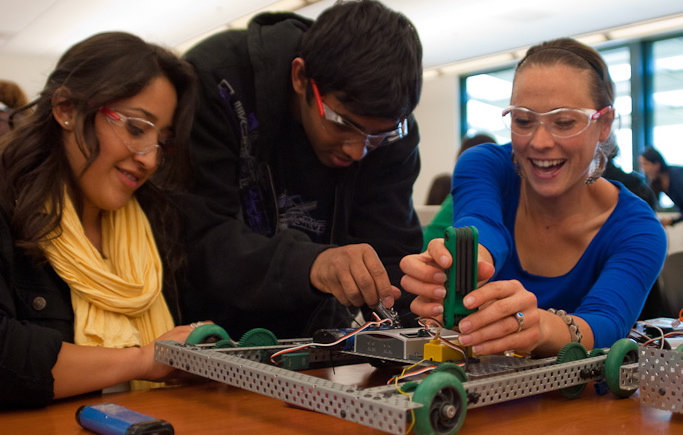Spotlight on VET in Schools
Rachael Ward
After working three months part-time at a dental practice in Melbourne in 2013, then eighteen-year-old Melissa Pyros’ employer encouraged her to change where she was studying Certificate III in Dental Assisting.
“The workplace I was employed by didn’t really accept the fact I was doing my Certificate III at Box Hill and preferred if I went to RMIT instead,” she said.
“It was very limited, a lot of written work about diseases and communication mainly. I Would have liked to known more about the stuff we use in the dental clinic.”
“When I transferred to RMIT they basically said the three months of work I did [at Box Hill] was poor and I’d better to start again which I did. So now I’ve done my Certificate III and I’m studying dentistry next year.”
In October Education Minister Simon Birmingham announced a shake-up of the scandal-plagued Vocational Education and Training sector, including the end of the Gillard Government’s VET-FEE HELP loan scheme which will end in December 2016.
Earlier this year the Australian Skills Quality Authority flagged it was investigating VET courses due to a concern under skilled graduates of diplomas and certificates were working with vulnerable people, young children and the elderly.
Amid the federal crackdown, less attention has been paid to students completing VET courses, traineeships and apprenticeships while undertaking VCE and VCAL courses at school.
51,500 Victorian senior school students were enrolled in 510,125 VET in Schools modules across twelve areas in 2015.
Victorian students completing VET subjects withdrew from or failed modules at a higher rate than the national average in almost half of the subject areas offered. Levels of completion were below national average in engineering and related technologies, education, agriculture, society and culture and mixed field programs.
[infogram id=”b0e6f449-2666-4d04-9086-f0c065c63728″]78% of students studying education subjects passed, with the 22% fail rate being the highest fail rate in the state. The highest rate of completion was in natural and physical sciences subjects, at a pass rate of 89%.
The data released by the National Center for Vocational Education Research shows a gender divide among the 257,000 students enrolled in VET across Australia, as 53.4% of students are male and 46.3% are female.
[infogram id=”427c04be-8160-4888-bf40-09f53596960c”]Last year Certificate II was the most popular VET qualification for students across Australia. Certificate III is a close second, particularly in Independent and Catholic schools where VET in Schools fees are often included in tuition fees.
[infogram id=”dd3739ab-02a6-4b4a-a03a-dabbfaf41354″]Nineteen-year-old Alex Forcone had a good experience of VET at school. In 2015 he completed Certificate II in Horticulture at Melbourne Polytechnic while studying VCE at a Catholic boys school in Melbourne’s northern suburbs.
“I did the course because I’ve always been interested in the area of work since I was a kid, and having the opportunity to extend my knowledge at such an early stage was really awesome for me,” he said.
This year Alex completed Certificate III in Horticulture, and is now in the process of creating his own gardening maintenance small business.
“Having done the certificates I thought I may as well work full time now and learn more through working instead of school.”
“The main drive to starting a business is the fact that I have had some experience working with others in jobs [like] gardening, landscaping, part time job at a car wash for Volvo and a nursery for a little while.”







